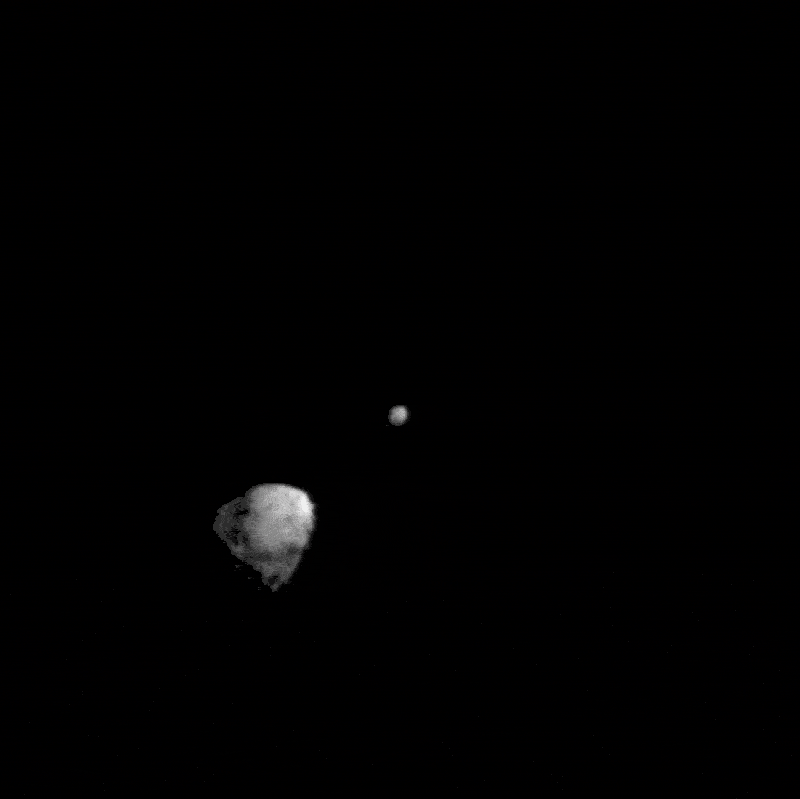That was really cool. Can’t wait to see pictures and find out the results.
Amazing direct hit! Pretty amazing to watch. But I couldn’t help but thinking
Where’s the kaboom? There was supposed to be an earth-shattering kaboom!
That was incredible. The head of the dart mission was commentating live on NASA Spaceflight as it impacted and said it was interesting that the asteroid looked very much like Bennu. Great coup for them and brilliant coverage.
Looking forward to the post-impact analysis. I wonder how much of a plume it kicked up, and how much momentum transfer actually took place.
The last few photos were fabulous. I always marvel at closeups of alien rocks and gravel. I thought it would have been cool if the control center had a guy beating a drum and calling out “RAMMING SPEED!”
Agree, that was awesome.
Where/when will we see after-mission analysis?
When are we going to see images from LICIACube? Googling did not find that info.
For those unfamiliar, LICIACube is a cubesat that went along with DART but was released earlier this month. It was supposed to take pictures of the collision.
Google has a fun little Easter egg for DART:
https://www.google.com/search?q=dart+asteroid+redirect+mission
ATLAS observes DART impact:
![]()
Brian
Awesome - it’s probably my imagination but it looked like it was moving more slowly after the impact…
From Ars technica:-
As for the details of that impact, we’ll have to wait. The best images we’ll get are from an Italian Cubesat called LICIACube that has been trailing DART since the two separated a few weeks ago. LICIACube will be about 50 km from the point of impact and will get even closer over the three minutes after impact before passing behind Dimorphos. But it will take some time to transmit images to Earth—possibly a day or more for processing and release.
Yeah, I figured it’d be a little while just to transmit the images. Being a cubesat means only a low bandwidth transmitter.
What I’d heard was not that it would be a day or more to get the pictures, but a day or more per picture.
I’ll assume that they will start with the ones right before impact.
NYTimes has images from the LICIACube (gift article)
Note that the first images in the article are not from LICIACube, but rather from an Earth-based telescope. You have to scroll down the page a bit to find four images from the cubesat. Also note that what we see in the Earth-based images is actually Didymos, the main asteroid, not Dimorphos, the satellite that was hit. We see the ejecta, but not the satellite.
Nature has the images transmitted by the DART spacecraft itself.
NASA, SpaceX, and Jared Isaacman (the guy funding the private Inspiration4 mission) are all on a conference call:
They’re talking about a study into running a public/private servicing mission for Hubble to extend its lifetime using a Crew Dragon.
Juno flyby of Europa – no it did not attempt to land ![]()
Brian
Not a whole lot of concrete details. For now, it’s just a feasibility study. At minimum, they’re looking into a reboost mission. The degrading orbit is currently the primary limiter. They may also look into an actual servicing mission. The telescope is currently running on 3 out of 6 gyros, but importantly, the remaining 3 are the “enhanced” type that they don’t expect problems with. Still, it might be valuable to replace the non-operational ones.
Unclear what role Isaacman has to play in this, except that he (and his crew) will likely have more experience with Crew Dragon than anyone by the time of any mission. NASA just uses it to head to the ISS and back, but Isaacman will be testing SpaceX’s new EVA suits and operations outside of the ISS. And, maybe he’ll do the mission for free, or cheap, since it could be part of a mission he was already doing.
At any rate, it would be a nice outcome of the Hubble service life could be extended with minimal cost to NASA, and possibly some extra PR coverage by making it a combined public/private effort.
I expect Eric Berger of Ars Technica to write something up very soon. I may have missed some details.
I’m looking forward to seeing the data from the black box.
What do you mean there’s no black box ?
There’s always a black box !


